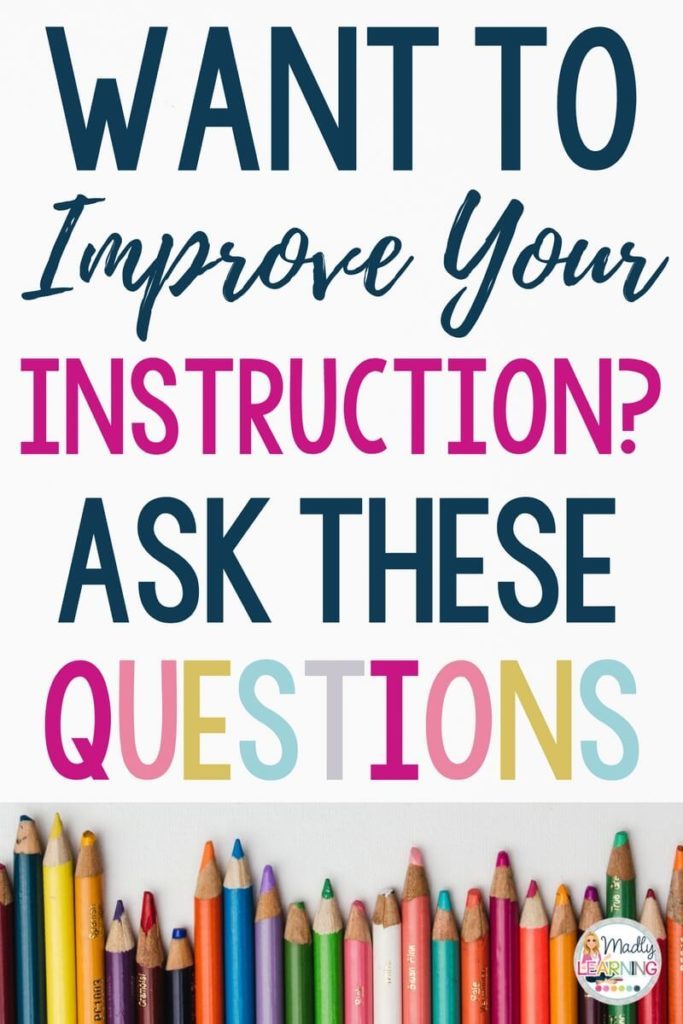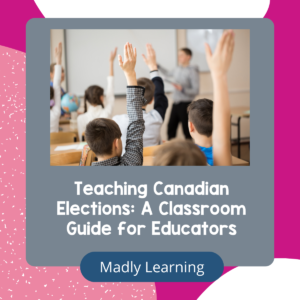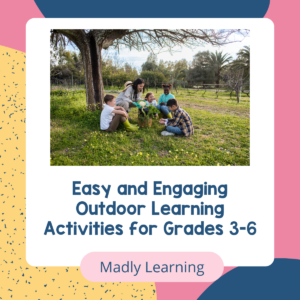
One thing that I notice the most when I watch others teach is this? What makes this teacher effective at instructing their students. Throughout my relatively short teaching career (8 years) I have been very lucky to be in the company of many great teachers. For a few years I was an itinerant teacher and in this position went into other’s classrooms and helped them modify and accommodate for their ELL students. If you ever have the opportunity to do this then you should jump at the opportunity especially early in your career. I was able to see a different teacher, in different grades doing amazing things, all day long. I think I learned something from each of these teachers about how to be a better teacher myself. What I learned was how to improve my instruction so that students could learn. Hosting student teachers, team teaching, and writing unit plans for TPT etc. also puts me in the position of having to explain my instructional strategies to another person. Which is not an easy task when sometimes I just do it my way. With some reflection, and discussions with my fantastic EA @tamihorning who often helped me to analyze what it is I do. I think that I have the three questions that help me to explain what effective instruction looks like.
1. Do you Really Differentiate?
Differentiation can occur in three places of the teaching cycle. The Content, the Process and the Product Most of the time we differentiate what the student does. But what about differentiating you instruction, how you present the information to students. I have classes full lots of boys, often very active boys. What do I find. These boys are not auditory learners, they are doers, kinesthetic learners. While some are also visual learners. So when I teach I make sure important instructions involve all three sets of instructions. I write it down, I saw it out loud and I associate movement with them. The movement piece was the hardest part to get used to because sometimes you feel like a dancing fool up in front of your class acting out the instructions. But guess what, using this helps students immensely and during tests you will often see them relying on these movements to help them remember the steps. Or sometimes it is just that my movement help them to focus and remember.
- Crazy Professor: One strategy I use is called the crazy professor. Given a list such as procedural steps, or rules I have students look at the list and act it out. Everything is big and over the top with this strategy. There is lots of laughter and silliness but it is also very effective. I often use this when teaching students how to subtract with regrouping.
- Mirror: Giving instructions to students can sometimes be hit and miss. With this strategy from Whole Brain Teaching. I give instructions, and key concepts in this format. I hold up my hand and say Mirror Up. This signals the students to hold up both hands facing out. They then copy my actions and words as I say them. There is something about this strategy that just helps those multi step instructions or key concepts sink in.
Question 2: Who is doing Most of the talking?
In a traditional classroom usually the teacher does most of the talking. However I believe that students must spend more time engaged in their learning. Additionally students in the elementary level just don’t have the attention span. We are talking to students who are used to getting their information immediately. They really don’t want to listen to us talk at them for 60 minutes. However we also need to get our lesson across and guide students to learn new concepts. Changing your structure of teaching is important for this as is trusting that your students can learn.
Mini Lessons: Keep your lessons short. I find this easier if I have a learning goal and stick with it. If you start your mini lesson with a narrow goal of what you are going to teach then you are better able to stick to a time frame and clearly express for your students what you want them to learn. It is so easy to get trapped in the I have to take every opportunity to teach everything. Let me assure you, you don’t. If you try to do too much then the power of your message is lost. I try to stick to 10-20 minutes of me talking at a time. However there are times where more direct instruction is necessary so how do you stick to the mini lesson format. I use some of these strategies.
- Teach – Ok: This is another whole brain teaching strategy that I use to break up my time talking and get students talking about what it is we are learning. If is a much more active version of Think Pair Share. Plus with the prompts TEACH/OK students know exactly what to do when they hear the prompt TEACH! Students turn elbow to elbow or knee to knee and discuss the problem/question/ or teach their partner what you just taught them to reinforce the concept. “Tell your partner all about the steps to write a summary…TEACH!” “OK”
- Small Group Tasks: While students are still learning a concept and are not yet ready for independence I feel that it is important for them to learn from each other and work together to practice a concept. Using ideas like a KWL chart, Graffiti Write, Card Sort, and a Quick Write are some of the few.
Question 3: Do you believe that your students are capable?






